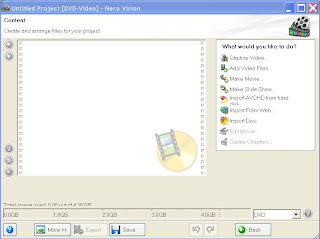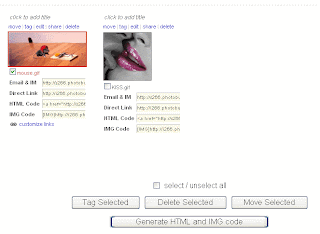A Concept Proposal for a WasteHeat District Cooling System in Singapore22 Jan 2008
Introduction Singapore imports almost all her energies; fuel oil from the spot markets and natural gas from Indonesia & Malaysia. About 20% of these energies are for cooling of buildings and almost all the cooling energies are generated from electricity. This article describes a concept proposal to tap wasteheat from Industrial plants to power part of the cooling requirement. It is meant for reference of those who are interested in the topic.
District Cooling System (DCS)Presently, Singapore has 2 running DCS plants, one in Changi Business Park and the other, in the Changi Naval Base. A few plants being planned; the larger one is for the Marina South Area. A brief description about DCS in Singapore can be found
here.
The WasteHeat DCSSingapore has located energy guzzlers in an island called Jurong Island for strategic reasons, This island, about 2 km from the mainland, is a good candidate for one to tap and use the wasteheat for District Cooling. According to a conservative estimate, companies in this island are generating about 2000 MW of wasteheat and this energy can cool buildings in an area about 6 times the size of Jurong Industrial Estate.
 FAQ
FAQ
1. What is wasteheat?Wasteheat are often referred to as low grade heat, not quite capable of being transformed into useful energy; thus, they are either vented into the good air by spending more energy cooling them or being dumped into the ocean.
2. Why Wasteheat?Wasteheat are not necessary free as there will be additional investment to extract them but they are much cheaper. The use would cut environmental pollution; help Singapore earn
carbon credits and reduce her energy requirement. It could also promote development growth.
3. How could one tap wasteheat?There are few technologies available today to tap these wasteheat depending on their temperature. If one can get wasteheat above 120 oC, one can use
absorption and/or Adsorption chillers to convert the heat into chilled water. If the wasteheat is less than 120 oC and above 60 oC, one can use
desiccant cooling system.
4. How to transport the cooling energy to the mainland?It would not be wise to transport the cooling energy using ordinary chilled water because of the high pumping cost and the excessive heat losses. There are 2 other viable methods:
a) Slurry Ice methodConvert the energy to slurry ice or
similar that can be transported over a longer distance;
b) The Desiccant methodTransform the heat into chemical energy using
Desiccant. Then heat loss would not be an issue because desiccant is a
chemical (e.g. Lithium Chloride) rather than an energy source; pumping demand would be much less as desiccant can “store” much more energy than water in any form.
Desiccant is preferred not only because the energy can be transported much further but also because desiccant cooling is more suitable for use in a very humid country like Singapore; it is more efficient than the electric air-conditioners in removing moistures from the air. Normally, air-conditioners in Singapore spend about 30 to 40% of the energy, removing these moistures.
5. What about viability?There was a research work indicating a wasteheat DCS in Jurong Island using absorption chiller method was viable; then, the electricity rate was about S$ 0.10 per Kwh, the fuel oil: US$25/=per barrel and the natural gas: US$ 6/= per MMBTU. Today, the electricity rate has almost doubled and the fuel oil, 3 times as much.
6. What is the Rough Cost of Wasteheat?It has been estimated that the wasteheat might cost about S$10 per MW. This rate is roughly 1/20 the cost of electricity at around S$ 200 per MW.
7. How Much Wasteheat could one tap?Earlier work indicated an initial capacity of around 300 MW or 85,000 tons of refrigerant. This power will be enough to cool buildings in an area of about 2,000 ha or roughly the size of Jurong Industrial Estate.
8. What will be the Estimated Total Cost?Working on S$1,300 per ton, the estimated cost will be roughly S$100 millions excluding network piping which may be another S$ 200 millions.
9. What about Payback Period?Working on very conservative figures, the payback period should be less than 8 years basing on today's energy cost
10. Can one start the DCS with a small plant?
Can we mix use different types of energy? One can start a DCS at any size and slowly building them up over the years. There are DCS plants in the US that utilize small chillers in individual building, linking and integrating them over time to form a massive DCS network. Some of them mix use electricity, natural gas, diesel power and ground thermal heat to maximum profit.
11. What are the Expected Difficulties?There is no real technical difficulty. Tapping of wasteheat from Industrial plant for air-conditioning is well proven; however, there will be difficulties in securing wasteheat from the industrialists who must be convinced that wasteheat tapping, not being part of the plant design, will not affect the plant operation and efficiency. There was a concern of not having sufficient wasteheat to start up this DCS; however, this concern can be addressed by having supplemented heat from natural gas or
seawater initially at a higher rate.
Why not much WasteHeat District Cooling found on the Web?Unlike Singapore where the energy guzzlers are located within distance, many countries locate their energy guzzlers remotely away from city centres. This concept will not work well for these countries because of the higher energy transportation cost. Most of them are small plants because of limited consumers; for example, this plant in
Wakayama Marina City of Japan, has a capacity to heat and cool about 1500 homes and saved 30% energy bills.
Conclusion There should be no technical difficulties tapping wasteheat from the industries in Jurong Island for cooling purposes. There will be a need to convince the industrialists and secure the wasteheat from them. During the startups, the heat can be supplemented by natural gas or seawater. Singapore Government can help to promote this development.




 They are never designed to be vacuum pump but the piston construction of which make them candidates for conversion into vacuum pumps.
They are never designed to be vacuum pump but the piston construction of which make them candidates for conversion into vacuum pumps.



 2) Charge compressor oil into the yellow hoses or use a proper oil injector to charge. The amount of oil to be charged will depend on the type of repair or oil leakage. Normally, assume 80% will be lost if one drained the compressor empty; otherwise, assume about 15-20% loss in oil. For information, a car air-conditioning system would normally have 300-350 cc of oil;
2) Charge compressor oil into the yellow hoses or use a proper oil injector to charge. The amount of oil to be charged will depend on the type of repair or oil leakage. Normally, assume 80% will be lost if one drained the compressor empty; otherwise, assume about 15-20% loss in oil. For information, a car air-conditioning system would normally have 300-350 cc of oil; 


 The burner type is less sensitive and the detection is by observing the color of the flame. Normally, on detection of gas, the flame would turn bluish-green for small leaks and bluish violet for larger leaks.
The burner type is less sensitive and the detection is by observing the color of the flame. Normally, on detection of gas, the flame would turn bluish-green for small leaks and bluish violet for larger leaks.
 3. Now, copy the little html code to embed in the blog pages. There are 2 ways to copy the html code:
3. Now, copy the little html code to embed in the blog pages. There are 2 ways to copy the html code: The result is a GIF picture of original size. The GIF will be trancated if the GIF is of too big a size.
The result is a GIF picture of original size. The GIF will be trancated if the GIF is of too big a size.

